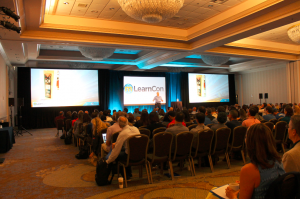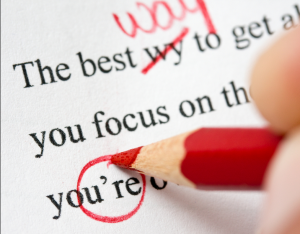3 Tips for Your Next Conference Proposal
What makes up a great conference proposal?
 This is a question I am often asked, and with the call for proposals for the 2015 Learning Solutions Conference and Expo closing this Friday, July 18th, it’s been a popular topic of conversation. There are a lot of factors that go into a proposal being a match for a particular event, and quite often, there are more great proposals than there are available slots on a program. As such, it’s incredibly important that your proposal is written in a way that effectively conveys not only the story you want to share, but more importantly why attendees would want to hear it.
This is a question I am often asked, and with the call for proposals for the 2015 Learning Solutions Conference and Expo closing this Friday, July 18th, it’s been a popular topic of conversation. There are a lot of factors that go into a proposal being a match for a particular event, and quite often, there are more great proposals than there are available slots on a program. As such, it’s incredibly important that your proposal is written in a way that effectively conveys not only the story you want to share, but more importantly why attendees would want to hear it.
This post shares three tips to take into account the next time you write a conference proposal.
Problems and Solutions
The most important part of any conference proposal is the session description. It’s the session description that tells those planning the conference what your session is about. It’s what makes a potential attendee decide to attend your session instead of the one of the many other options they may have at the same time.
Too many proposals follow a passive format that can best be described as “here’s what we’re going to talk about”. Great content is only one piece of the puzzle. It’s critical that your session description is compelling and gives readers a reason to choose your session over other options. One way to do that is to follow a problem/solution narrative in your sessions.
 As the name implies, this format consists of two parts. The first part addresses the problem your session targets, and the second part details how your session will address the problem you have laid out. Others have referred to this format as ” the pain and the gain”. In some ways I like that description better, as addressing someone’s pain provides a very personal connection.
As the name implies, this format consists of two parts. The first part addresses the problem your session targets, and the second part details how your session will address the problem you have laid out. Others have referred to this format as ” the pain and the gain”. In some ways I like that description better, as addressing someone’s pain provides a very personal connection.
For a session to be compelling, the problem you describe in your description must be relevant. It must resonate with the event and potential attendees. It’s an easy way to connect your session with a potential attendees.
From there you need to address how your session addresses then problem you are exploring. As an attendee, how will attending your session help me better overcome the challenges presented by the problem?
Clearly detailing a problem that attendees may be encountering, and detailing how your session will help them be better equipped to deal with the issue on their own creates a unique value proposition for your proposal.
“Will you read this for me?”
One of the most important words of the previous paragraph is “clearly”. Quite often when we write, there are gaps in the story conveyed in the writing. Things are not quite as clear as they could and should be, and our minds trick us into thinking they are.
The issue is that the full story is already in our head, and we’re transferring it into written form. When there are gaps in the written story, our minds can automatically fill in the gaps with what we already now. It’s what makes it hard to effectively proofread our own writing for clarity.

I try to ask someone else to read my writing before a submit it, or publish it. These fresh viewpoints don’t have the full story in their heads to fill in the gaps of the writing, and as such they are much more adept at identifying gaps in the story.
This is especially true in writing a conference proposal. There are only a few short paragraphs available for a writer to convey what a potential session is about, why it is important, and how it will benefit people who attend the session. That is not an easy task. Having someone else read the proposal can identify gaps in the writing that can often be the difference between a proposal that is added to a program, and one that is not.
Less is More
Another mistake people make is overestimating how much can actually be covered in the allotted time of the session. In fact, that statement is itself part of the the issue.
Great sessions are rarely judged based on how much content is covered; great sessions are judged by the experience people have, and the depth in which a topic is explored. I have seen too many sessions in which the speaker kicks things into high-gear during the last 10 minutes to ensure he or she “gets through the content”. That is a huge mistake. Most people would rather attend a detailed and thorough contextual discussion exploring two or three topics, then sit through an hour long high-speed lecture that covers everything in a way that provides no real takeaway value.
When writing a session description, focus on the quality of the discussions you can have with attendees in the allotted time instead of the quantity of topics you can cram in. Your proposal, and ultimately your session, will be stronger for it.
But Wait, There’s More
There are a number of additional tips that can help your write better proposals. I shared additional tips early this year covering ideas including understanding the event, writing for your readers, telling a story, and more earlier this year. I’m sure some of you reading this might have tips to share too.
If you have a tip that you’d like to share regarding writing a conference proposal, please feel free to add it to this page via the comments.

Leave a Reply